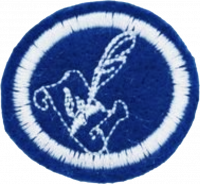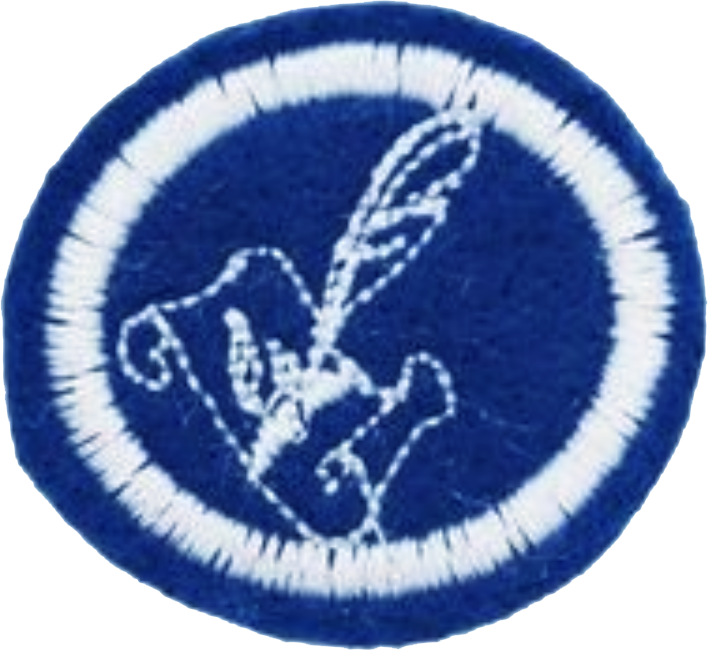Difference between revisions of "AY Honors/Church Historian/Requirements/es"
(Created page with "</noinclude>¿Cuál es la importancia del estudio de la historia? <noinclude>") |
(Created page with "</noinclude>¿Cómo llegó el mensaje adventista a la región? <noinclude>") |
||
| Line 33: | Line 33: | ||
<noinclude></noinclude><section end=req1h /></b> | <noinclude></noinclude><section end=req1h /></b> | ||
| − | :<b>i. <section begin=req1i /><noinclude> | + | :<b>i. <section begin=req1i /><noinclude></noinclude>¿Qué es Cronología y Periodización? |
| − | </noinclude> | + | <noinclude></noinclude><section end=req1i /></b> |
| − | <noinclude | ||
| − | |||
| − | :<b>j. <section begin=req1j /><noinclude> | + | :<b>j. <section begin=req1j /><noinclude></noinclude>¿Cuál es la diferencia entre Conocimiento Histórico y Reflexión Histórica? |
| − | </noinclude> | + | <noinclude></noinclude><section end=req1j /></b> |
| − | <noinclude | ||
| − | |||
| − | <b>2. <section begin=req2 /><noinclude> | + | <b>2. <section begin=req2 /><noinclude></noinclude>Enumerar las principales fuentes para la investigación sobre historia de la Iglesia (Escritos: documentos, diarios, libros, cartas, etc.; No escritos: orales, monumentos, fotografías, músicas, vestuarios, etc.). |
| − | </noinclude> | + | <noinclude></noinclude><section end=req2 /></b> |
| − | <noinclude | ||
| − | |||
| − | <b>3. <section begin=req3 /><noinclude> | + | <b>3. <section begin=req3 /><noinclude></noinclude>Citar al menos una fuente que trate sobre la historia denominacional de la IASD en el país. |
| − | </noinclude> | + | <noinclude></noinclude><section end=req3 /></b> |
| − | <noinclude | ||
| − | |||
| − | <b>4. <section begin=req4 /><noinclude> | + | <b>4. <section begin=req4 /><noinclude></noinclude>Hacer un informe con, por lo menos 400 palabras sobre el surgimiento del movimiento adventista. |
| − | </noinclude> | + | <noinclude></noinclude><section end=req4 /></b> |
| − | <noinclude | ||
| − | |||
| − | <b>5. <section begin=req5 /><noinclude> | + | <b>5. <section begin=req5 /><noinclude></noinclude>Utilizar técnicas de estudio histórico (bibliográfico, documental, entrevistas, etc.) y redactar una biografía detallada de un: |
| − | </noinclude> | + | <noinclude></noinclude><section end=req5 /></b> |
| − | <noinclude | ||
| − | |||
| − | :<b>a. <section begin=req5a /><noinclude> | + | :<b>a. <section begin=req5a /><noinclude></noinclude>Pionero de la Iglesia Adventista en el país o región |
| − | </noinclude> | + | <noinclude></noinclude><section end=req5a /></b> |
| − | <noinclude | ||
| − | |||
| − | :<b>b. <section begin=req5b /><noinclude> | + | :<b>b. <section begin=req5b /><noinclude></noinclude>¿Cómo llegó el mensaje adventista a la región? |
| − | </noinclude> | + | <noinclude></noinclude><section end=req5b /></b> |
| − | <noinclude | ||
| − | |||
<b>6. <section begin=req6 /><noinclude><div lang="en" dir="ltr" class="mw-content-ltr"> | <b>6. <section begin=req6 /><noinclude><div lang="en" dir="ltr" class="mw-content-ltr"> | ||
Revision as of 18:14, 25 March 2021
Nivel de destreza
2
Año
2012
Version
03.12.2025
Autoridad de aprobación
División Sudamericana
1. Entrevistar a un profesor de historia y presentar la entrevista al evaluador:
- a. ¿Qué lo motivó a elegir ser un historiador o profesor de historia?
- b. ¿Qué le llama más la atención al estudiar la historia?
- c. ¿Cuál sería el aspecto más interesante de esta profesión y el más difícil?
- d. ¿Qué es historia?
- e. ¿Qué es historiografía?
- f. ¿Cuál es la importancia del estudio de la historia?
- g. ¿Cuál es el trabajo de un historiador y en qué campo trabaja?
- h. ¿Cuáles son las principales técnicas de levantamiento e investigación histórica?
- i. ¿Qué es Cronología y Periodización?
- j. ¿Cuál es la diferencia entre Conocimiento Histórico y Reflexión Histórica?
2. Enumerar las principales fuentes para la investigación sobre historia de la Iglesia (Escritos: documentos, diarios, libros, cartas, etc.; No escritos: orales, monumentos, fotografías, músicas, vestuarios, etc.).
3. Citar al menos una fuente que trate sobre la historia denominacional de la IASD en el país.
4. Hacer un informe con, por lo menos 400 palabras sobre el surgimiento del movimiento adventista.
5. Utilizar técnicas de estudio histórico (bibliográfico, documental, entrevistas, etc.) y redactar una biografía detallada de un:
- a. Pionero de la Iglesia Adventista en el país o región
- b. ¿Cómo llegó el mensaje adventista a la región?
6.
How did the Adventist message reach the region?
- a.
Interview someone, if possible, who is a pioneer of the church in the region.
- b.
Have a picture of the person.
- c.
Have a copy of a written source that mentions the arrival of Adventism in the region (it may be a denominational magazine or not).
How was the church to which the club belongs organized?
- a.
Interview someone, if possible more than one person, who has been a pioneer of the local church.
- b.
Get photos of the first members of the church.
- c.
Have a copy of some written sources about the foundation of the church (minutes of the meeting, purchase of the land).
- d.
Have pictures of the construction of the church, inauguration, dedication, etc.
8.
Use the material studied in requirement 5 and prepare a final report on the history of the local church and congregation in the region. (This report can be presented in commemorations of the church and the field, or you can also donate some copies to the municipal authorities and libraries).
9.
With the help of the club director, make a detailed historical report about the existence of the Pathfinder Club.
10.
Prepare a poster about the history of the church and exhibit it in the church, at least two Sabbaths (if the honor is completed as a group, assignments should be distributed and the poster should be displayed in more than one place, at least two Sabbaths in each place). The poster must be according to the following scheme (Note: If the poster is completed as a group, the number of places where the poster is to be displayed must be proportional to the number of members that participated in making it; ask the director or counselor for help):
- a.
Timeline style of the church history.
- b.
Cover from the Great Disappointment to the last club camporee.
- c.
Present images for most of the events.
- d.
All events must have a date.
- e.
Highlight events of the Division, church and club.
- f.
Present at least 20 historical events in total, highlighting the global, regional, and local relevance of these events.
11.
Participate in a skit on some peculiar event in the history of the Adventist pioneers.
12.
After all the work has been done, discuss with the instructor the sense of heritage, legacy, tradition, and belonging.



